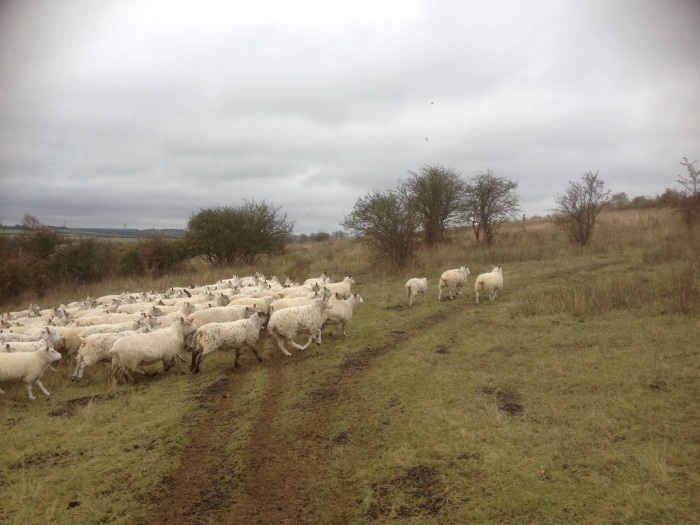Sheep will face an increased threat from liver fluke, gastrointestinal worms and blowfly strike this August and September, while cattle are at increased risk from parasitic disease caused by gutworm and lungworm according to the latest NADIS parasite forecast, sponsored by Merial Animal Health.
High temperatures and regular rainfall through June and July has increased the potential for fluke infection in sheep in North West and South West England, Scotland and Wales. Warm, wet summers create suitable conditions for the intermediate fluke host, the mud snail to thrive. All regions should be aware of the risk of acute fluke this summer.
Parasitic gastroenteritis (PGE) is still a risk to growing lambs in late summer. Sioned Timothy, Ruminant technical manager at Merial Animal Health, advises that: “Selecting the most appropriate anthelmintic at weaning, implementing targeted treatments based on liveweight gain or faecal egg counts (FECs), and testing for the presence of wormer resistance is a much better, more sustainable approach than whole group anthelmintic treatment.”
Selection of an appropriate anthelmintic should be discussed with a vet or animal health adviser, with particular care taken where resistance to one or more groups of wormers has been confirmed or is suspected on farm.
Blowfly strike continues to be a risk to sheep during the summer months, with female flies attracted to wounds and soiled fleece. In growing lambs, practicing proper parasite control will reduce faecal soiling of wool, and help minimise the risk of fly strike.
Cattle can be infected with several species of gut worms. Ostertagia ostertagi is the main parasite associated with disease, but Cooperia spp. are commonly encountered in young cattle in their first grazing season. Peak pasture larval infectivity occurs from mid-July onwards and results from eggs passed by animals earlier in the grazing season.
High pasture larval challenge can be avoided by moving youngstock to safe grazing, including silage or hay aftermaths not grazed by cattle in the previous year.
On permanent pasture, cases of type 1 ostertagiosis or parasitic gastroenteritis usually peak in youngstock during August and September, dependent on climatic conditions. The use of targeted anthelmintic treatments based on liveweight gain and FECs throughout the grazing season can prevent outbreaks of disease.
If clinical disease occurs, it’s important to spot the signs and act quickly to preserve productivity.
Ms. Timothy says: “During outbreaks acute, profuse diarrhea will quickly affect most animals in the group with rapid loss of weight and body condition. Following diagnosis all cattle in the group should immediately be treated. An ivermectin-based anthelminitic such as IVOMEC® Classic Pour On and Injection control of a wide range of gastrointestinal roundworm species. ”
Outbreaks of lungworm disease often peak in July and August. While unvaccinated youngstock, cattle without an effective anthelmintic program and naïve adults are most at risk; lungworm has increasingly been reported in adult cattle.
In areas where lungworm is endemic, first year grazers should have been vaccinated prior to turnout, however immunity may wane towards the end of the season so vigilance should be maintained. Unvaccinated calves should be monitored closely for signs of lungworm infection.
Early signs of lungworm include coughing and an increased respiratory rate. Affected cattle rapidly lose weight and body condition, and milking cattle may experience a sudden and dramatic drop in yield.
Ms. Timothy says: “Prompt anthelmintic treatment is essential to remove lungworm and preserve productivity in the long term. Wormers from the macrocyclic lactone group, including IVOMEC® Classic Pour On and Injection are highly effective against adult and immature lungworms, whilst eprinomectin-based products such as EPRINEX® Pour On have zero milk-withhold, allowing cows to be treated at the most appropriate time without lost milk sales.”


